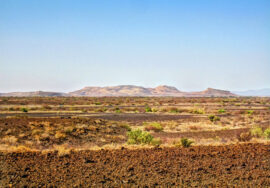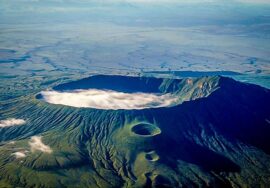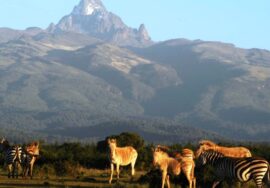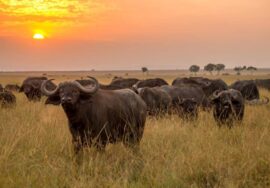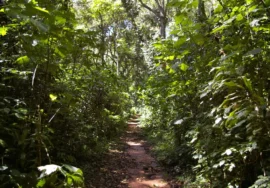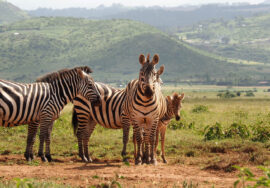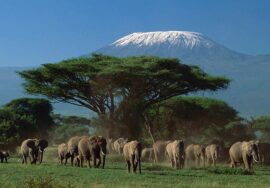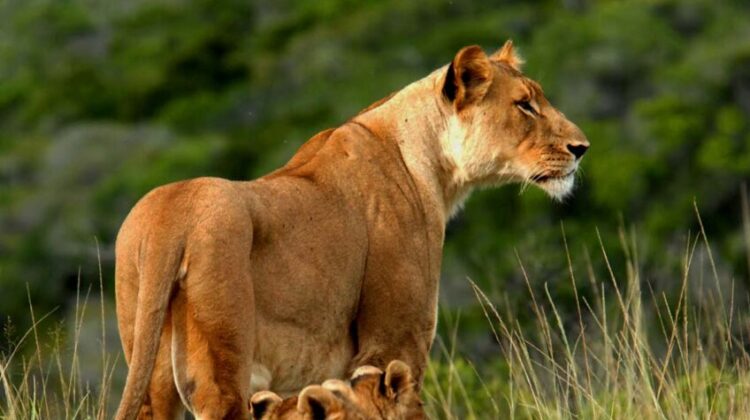
Tsavo West National Park Safari
Tsavo West National Park Safari, Tsavo West National Park is one of Kenya’s most diverse and scenic safari destinations, offering a mix of rugged landscapes, volcanic hills, lush oases, and abundant wildlife. Covering over 9,000 square kilometers, this park is home to the Big Five, as well as some of Kenya’s most breathtaking natural attractions, including Mzima Springs, Shetani Lava Flows, and Chyulu Hills.
Whether you’re looking for thrilling game drives, stunning landscapes, or a peaceful escape into nature, Tsavo West has something for every traveler.
1. Why Visit Tsavo West National Park?
Tsavo West is often described as “the land of lava, springs, and man-eaters” due to its fascinating history and dramatic landscapes. Here’s why it should be on your safari bucket list:
✅ Spectacular scenery – Rolling hills, volcanic landscapes, and lush green oases.
✅ Diverse wildlife – Home to lions, elephants, leopards, rhinos, and more.
✅ Mzima Springs – A beautiful water source where hippos and crocodiles thrive.
✅ The Shetani Lava Flows – A vast expanse of black volcanic rock formed centuries ago.
✅ Less crowded than Masai Mara and Amboseli – A more peaceful and intimate safari experience.
✅ Easy access from Mombasa and Nairobi – Ideal for combining with a Tsavo East safari or a beach holiday.
2. Best Things to Do in Tsavo West National Park
2.1 Game Drives – Explore the Wild Side of Kenya
Tsavo West is home to an abundance of wildlife, including:
Lions – The famous “Man-Eaters of Tsavo” once roamed here.
Elephants – Covered in red dust from Tsavo’s unique soil.
Black Rhinos – Found in the Ngulia Rhino Sanctuary.
Leopards & Cheetahs – Often seen resting in trees or hunting in the grasslands.
Giraffes, Zebras & Buffaloes – Common sightings throughout the park.
💡 Tip: Visit during early morning or late afternoon for the best wildlife viewing opportunities.
2.2 Mzima Springs – A Hidden Oasis
One of Tsavo West’s most famous attractions, Mzima Springs is a series of crystal-clear pools fed by underground streams from Chyulu Hills.
What to see at Mzima Springs:
-
Hippos & Crocodiles – Often spotted in the water.
-
Underwater Viewing Chamber – Watch fish and hippos from below the surface.
-
Beautiful walking trails – Ideal for birdwatching and photography.
💡 Tip: Visit in the morning or late afternoon when animals are most active.
2.3 Shetani Lava Flows – A Volcanic Wonderland
The Shetani Lava Flows are a massive expanse of solidified black lava, formed by volcanic eruptions over 500 years ago.
Why visit?
-
Striking landscapes – A unique, moon-like terrain.
-
Local legends – The Maasai people believe the lava was created by the devil (“Shetani” means “devil” in Swahili).
-
Great for photography – The black rock contrasts beautifully with the blue sky.
💡 Tip: Wear comfortable shoes if you plan to walk on the rough lava surface.
2.4 Ngulia Rhino Sanctuary – A Conservation Success Story
Tsavo West is home to the Ngulia Rhino Sanctuary, a protected area for endangered black rhinos.
Why visit?
-
See one of Africa’s most endangered species in a natural habitat.
-
Learn about rhino conservation efforts in Kenya.
-
Enjoy a guided game drive in search of these elusive creatures.
💡 Tip: Visit in the early morning or late afternoon, when rhinos are more active.
2.5 Bird Watching – A Haven for Bird Lovers
With over 600 bird species, Tsavo West is a paradise for birdwatchers.
Birds to look out for:
-
African fish eagles
-
Kingfishers
-
Secretary birds
-
Hornbills
-
Flamingos (seasonal)
💡 Tip: Bring binoculars and visit around Mzima Springs and Lake Jipe for the best bird sightings.
3. Best Time to Visit Tsavo West National Park
Dry Season (June – October & January – March)
-
Best for wildlife viewing, as animals gather around water sources.
-
Roads are in better condition for game drives.
Wet Season (April – May & November – December)
-
The landscape is lush and green.
-
Fewer tourists, meaning a quieter safari experience.
💡 Tip: If you want the best chance of spotting wildlife, visit in the dry season. If you prefer lush scenery and birdwatching, visit in the wet season.
4. Where to Stay – Best Lodges & Camps in Tsavo West
Luxury Lodges:
-
Kilaguni Serena Safari Lodge – Stunning views over a waterhole where elephants gather.
-
Severin Safari Camp – A luxury tented camp offering a true wilderness experience.
Mid-Range & Budget Options:
-
Ngulia Safari Lodge – Overlooks the Rhino Sanctuary and offers great wildlife views.
-
Voyager Ziwani Camp – A peaceful tented camp by the river.
💡 Tip: Book accommodations inside the park for the most immersive safari experience.
5. How to Get to Tsavo West National Park
By Road:
-
From Nairobi: 5-6 hours (250 km) via the Nairobi-Mombasa highway.
-
From Mombasa: 3-4 hours (200 km) – Ideal for a safari and beach holiday combination.
By Air:
-
Charter flights are available to Kilaguni and Finch Hattons airstrips inside the park.
💡 Tip: A Tsavo West & Tsavo East combined safari is a great way to experience the best of both parks.
6. Tsavo West vs. Tsavo East – Which One Should You Choose?
Both parks are part of Tsavo National Park, but they offer different experiences:
| Feature | Tsavo West | Tsavo East |
|---|---|---|
| Size | Smaller (9,065 km²) | Larger (13,747 km²) |
| Wildlife | More diverse landscapes, rhinos in Ngulia | Best for large elephant herds |
| Scenery | Volcanic hills, Mzima Springs | Open savannah, Galana River |
| Accessibility | Closer to Amboseli & Nairobi | Easier from Mombasa |
💡 Tip: If you have time, visit both parks for the ultimate Tsavo safari experience!
Vacationers who are looking for wildlife, excitement, and magnificent landscape will find that a safari in Tsavo West is the ideal experience. This park provides a safari experience that is genuinely one of a kind and an adventure that cannot be forgotten, from the famous red elephants to the Mzima Springs and the Shetani Lava Flows.

